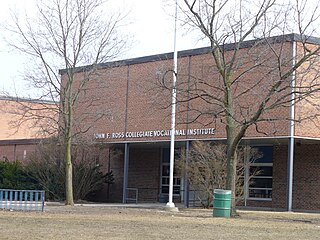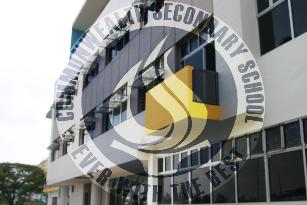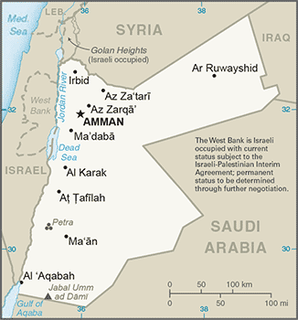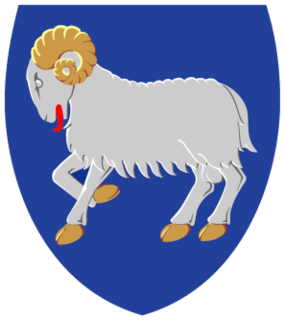
A college is an educational institution or a constituent part of one. A college may be a degree-awarding tertiary educational institution, a part of a collegiate or federal university, an institution offering vocational education, or a secondary school.

Vocational education is education that prepares people to work as a technician or to take up employment in a skilled craft or trade as a tradesperson or artisan. Vocational Education can also be seen as that type of education given to an individual to prepare that individual to be gainfully employed or self employed with requisite skill. Vocational education is known by a variety of names, depending on the country concerned, including career and technical education, or acronyms such as TVET and TAFE.

Gymnasium is a term in various European languages for a secondary school that prepares students for higher education at a university. It is comparable to the British English term academy for students aged 11 to 16 and sixth form college for post-16 education and to US English preparatory high school. Before the 20th century, the gymnasium system was a widespread feature of educational systems throughout many European countries.
Education in Thailand is provided mainly by the Thai government through the Ministry of Education from pre-school to senior high school. A free basic education of fifteen years is guaranteed by the constitution.

A vocational school is a type of educational institution, which, depending on the country, may refer to either secondary or post-secondary education designed to provide vocational education or technical skills required to complete the tasks of a particular and specific job. In the case of secondary education, these schools differ from academic high schools which usually prepare students who aim to pursue tertiary education, rather than enter directly into the workforce. With regard to post-secondary education, vocational schools are traditionally distinguished from four-year colleges by their focus on job-specific training to students who are typically bound for one of the skilled trades, rather than providing academic training for students pursuing careers in a professional discipline. While many schools have largely adhered to this convention, the purely vocational focus of other trade schools began to shift in the 1990s "toward a broader preparation that develops the academic" as well as technical skills of their students.
Education in Kenya refers to the education system in Kenya.
Education in Norway is mandatory for all children aged 6–16.
Educational stages are subdivisions of formal learning, typically covering early childhood education, primary education, secondary education and tertiary education. The United Nations Educational, Scientific and Cultural Organization (UNESCO) recognizes nine levels of education in its International Standard Classification of Education (ISCED) system. UNESCO's International Bureau of Education maintains a database of country-specific education systems and their stages.

Commonwealth Secondary School is a government, autonomous and coeducational secondary school in Jurong East, Singapore. Founded in 1964, Commonwealth Secondary School offers secondary school education which leads to the Singapore-Cambridge GCE Ordinary Level or Singapore-Cambridge GCE Normal Level examination.

Education in Sri Lanka has a long history that dates back two millennia. While the Constitution of Sri Lanka does not provide free education as a fundamental right, the constitution mentions that 'the complete eradication of illiteracy and the assurance to all persons of the right to universal and equal access to education at all levels" in its section on directive principles of state policy at (27. Sri Lanka's population had an adult literacy rate of 96.3% in 2015, which is above average by world and regional standards. Computer literacy in 2017 28.3% and phone users in 2017 105%, website users 32% in 2017. Education plays a major part in the life and culture of the country, which dates back to 543 BC. Sri Lanka's modern educational system modeled after Christian missionary system was brought about by its integration into the British Empire in the 19th century. Education currently falls under the control of both the Central Government and the Provincial Councils, with some responsibilities lying with the Central Government and the Provincial Council having autonomy for others. Education institutions with a tradition dating back to 5 BC are largely ignored by the state.

The education system of the Hashemite Kingdom of Jordan includes basic, secondary, and higher education and has dramatically evolved since the establishment of the state in the early 1900s. The role played by a good education system has been significant in the development of Jordan from a predominantly agrarian to an industrialized nation over time.
Education in the Philippines is provided by public and private schools, colleges, universities, and technical and vocational institutions in the country. Funding for public education comes from the national government. For the academic year 2017–2018, about 83% of K–12 students attended public schools and about 17% either attended private schools or were home-schooled.
Pakalkuri is a charming village situated in the eastern part of Varkala Taluk in Thiruvananthapuram District in Kerala, India. It is situated 20km east of Varkala Town on the banks of the river Ithikkara and well known for its serene beauty and landscape. The river Ithikkara, which originates from the Western Ghats, separates Thiruvananthapuram and Kollam Districts at Pakalkuri in its meandering to the Arabian sea.
Education in Nicaragua is free for all Nicaraguans. Elementary education is free and compulsory although this is not strictly enforced. Many children are not able to attend if their families need to have them work. Communities on the Atlantic Coast have access to education in both Spanish and the languages of the native indigenous tribes that live in the more rural areas of Nicaragua. Higher education has financial, organic and administrative autonomy, according to the law. Freedom of subjects is recognized. The school year runs from February through November.

The state of Uttar Pradesh had a small tradition of learning, although it had remained mostly confined to the elite class and the religious establishment.
Kendriya Vidyalaya Pattom is a school in Pattom, Thiruvananthapuram, India. It was established in 1964 as a civil sector school affiliated to CBSE.
Secondary education in Italy lasts eight years and is divided in two stages: scuola secondaria di primo grado, also known as scuola media, corresponding to the ISCED 2011 Level 2, middle school and scuola secondaria di secondo grado, which corresponds to the ISCED 2011 Level 3, high school. The middle school lasts three years from the age of 11 to age 14, and the upper secondary from 14 to 19.

The levels of education in the Faroe Islands are primary, secondary and higher education. Most institutions are funded by the state; there are few private schools in the country. Education is compulsory for 9 years between the ages of 7 and 16.









